Inonotus obliquus
Scientific name: Inonotus obliquus (Ach. ex Pers.) Pilat.
Derivation of name: Inonotus means "fibrous" (ino-) and
"ear-like" (ot-). Obliquus means "slanted" or"oblique"
meaning that the tubes (and their pores) are at an angle to
the ground - they are not oriented vertically.
Synonyms: Boletus obliquus Ach. ex Pers., Polyporus
obliquus (Ach. ex Pers.) Fr.; Poria obliqua (Ach. ex Pers.)
P. Karst
Common name(s): Clinker polypore, birch conk,
birch
canker polypore, chaga.
Phylum: Basidiomycota
Order: Hymenochaetales
Family: Hymenochaetaceae
Occurrence on wood substrate: Parasitic; sterile conks
made of compacted hyphae form almost exclusively
on trunks
of living birch (Betula) species; conks found
year-round.
Dimensions: The asexual, black clinker- or cinder-like knobs
or conks can be quite large, 10-40 cm across and irregular in
shape.
Description: Resembling charred wood or a canker-like
growth, the outer surface of the sterile conk is dark brown
to
black, hard, and deeply fissured. Internally, the tissue is
corky
and yellow to yellow-brown.
Edibility: Used to make a tea-like beverage. Caution should
be exercised due to the high levels of oxalates that may be
present in such teas.
Comments: The conks, although containing living hyphae,
have no known function. They are not fruitbodies. They
contain no reproductive tissues or structures. They may be
present on a tree for many decades without killing the tree.
If removed carefully, conks may regrow. In addition to the
sterile conk, the species forms an effused, poroid fruiting
body beneath the bark on snags or fallen trunks. This sexual
stage typically appears only after the tree dies. It is not
commonly found and will not be
described further.
More information at MushroomExpert.com
More information at MemorialSloanKettering
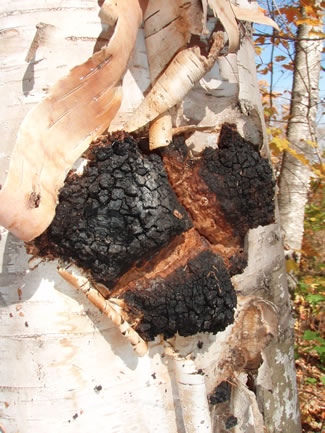
Figure 1. Inonotus obliquus on paper birch (Betula
papyrifera). Photo © Greg Marley.
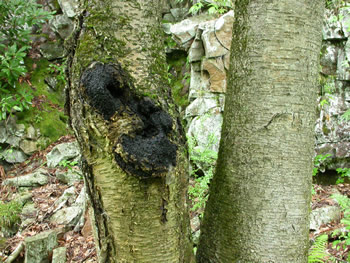
Figure 2.
Inonotus obliquus on yellow birch (Betula
alleghaniensis). Photo © Gary Emberger.
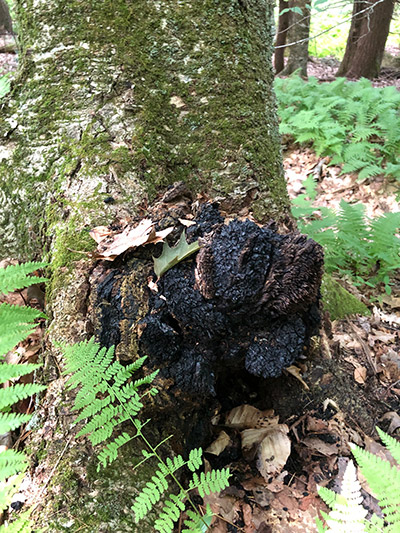
Figure 3.
Inonotus obliquus on yellow birch (Betula
alleghaniensis).
Photo © Kathy Wilson.
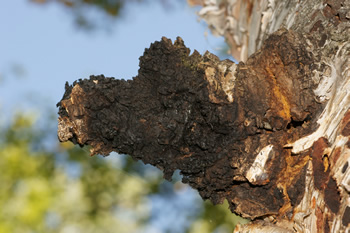
Figure 4. An elongate specimen.
Photo © John Plischke III.
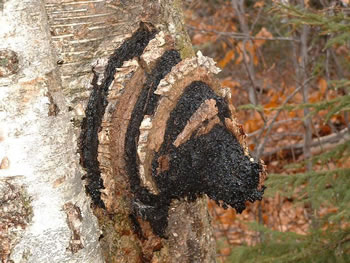
Figure 5. Rick Van de Poll refers to conks shaped like
this as "pig snout specials." Photo © Rick Van de Poll.
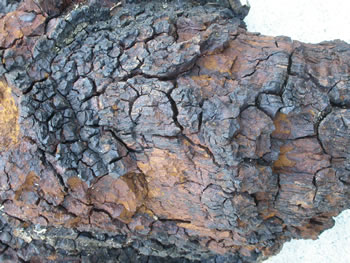
Figure
6. The dark, cracked outer surface of the
conk.
The black coloration is due to melanin deposits.
Photo © Gary Emberger.
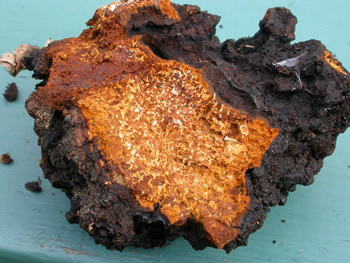
Figure 7.
Internally, the clinker polypore is yellowish to
yellow-brown. Photo © Gary Emberger.
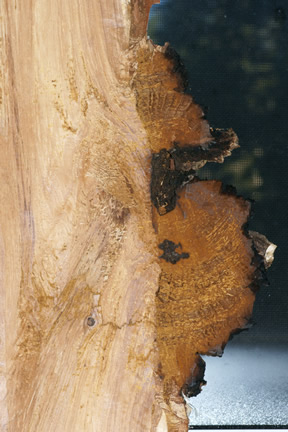
Figure 8. Section throrugh
Inonotus obliquus showing
attachment to the wood. Detaching the clinker polypore
often requires a hatchet or hammer.
Photo © John Plischke III.
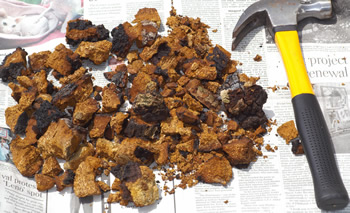
Figure 9.
Chaga tea preparation involves breaking the
conk into small pieces. Photo © John Plischke III.
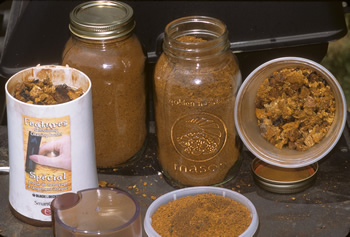
Figure 10.
A coffee grinder can grind the conk into
a fine powder used to make chaga tea.
Photo © John Plischke III.